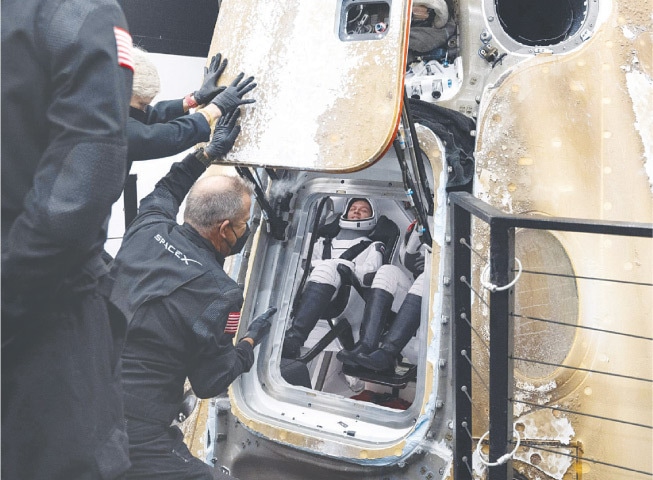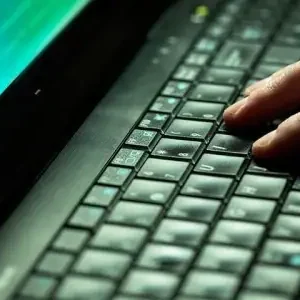After spending more than six months on the International Space Station, four astronauts made a splashdown return to Earth early on Tuesday in the Gulf of Mexico off the coast of Florida.
After an 18-and-a-half-hour voyage from the International Space Station, the SpaceX Crew Dragon spacecraft made a nighttime landing in the waters off Pensacola at 5:47 a.m., as captured by a NASA thermal camera. All four of the spacecraft’s drogue parachutes were deployed for the landing.
The same SpaceX Crew Dragon that returned them to Earth last August carried NASA’s Crew-7, led by US astronaut Jasmin Moghbeli, who was making her first spaceflight.
Russian cosmonaut Konstantin Borisov, Japanese cosmonaut Satoshi Furukawa, and Danish cosmonaut Andreas Mogensen were also on board.
During the six-month journey, the ISS crew evaluated how liver regeneration is impacted by microgravity, which speeds up aging.
“Seeing Crew-7 return home and in good health was wonderful. On board the retrieval craft was Rebecca Turkington of NASA. “What a way to start a morning,” she exclaimed.
In less than thirty minutes following splashdown, the capsule was recovered from the ocean, and the crew waved to the recovery team as they raised the hatch.
Despite Russia’s incursion into Ukraine and President Vladimir Putin’s aspirations to shift the world order of power, space collaboration between the US and Russia continues to be uncommon.
Additionally, American astronauts are still flying on Russian Soyuz rockets that take out from Kazakhstan.
Moghbeli honored the post-Cold War international collaboration that made it possible to build the International Space Station (ISS) in the 1990s during a goodbye ceremony on Sunday. It’s a demonstration of what we can accomplish when we collaborate,” she remarked.
“I’m really proud to be a part of this, especially when I reflect back to when this was just a dream and the people who had the vision, the grit and the courage to pursue this orbiting laboratory in low Earth orbit.”
As part of their scientific investigations, Crew-7 members collected samples during a spacewalk to ascertain whether the station emits microbes through vents related to the life support system. Another examined the impact of liver regeneration on microgravity, which hastens aging.
Crew-7 is the seventh regular NASA mission aboard Elon Musk’s SpaceX orbital platform; the first was launched in 2020. Crew-8, the most recent, was introduced on March 4.
As part of an American initiative to lessen reliance on Russian rockets after the space shuttle was retired in 2011, NASA pays SpaceX for the taxi service.
The second contracted private partner, Boeing, is running behind schedule with its program. Its current goal is to launch its first crew in May.
Launched in 1998, the International Space Station (ISS) has been continuously manned by a multinational crew since 2001.
It will be decommissioned and crash into the ocean in 2030, if its operations are not completed by then. To replace it, a number of private businesses are developing commercial space stations, and China has already set up its own orbital laboratory.
SOURCE: DAWN NEWS





